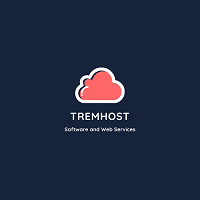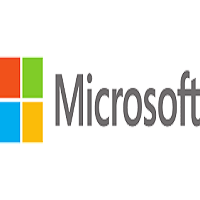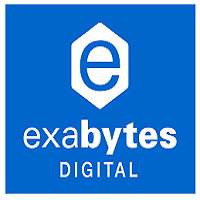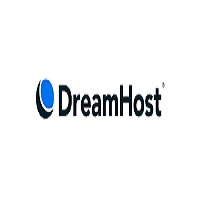Unified Endpoint Management (UEM) Software
Organizations can monitor and manage all PCs and mobile devices connected to their network thanks to unified endpoint management (UEM) solutions. They provide a single management interface for all connected endpoints by combining more conventional mobile device management (MDM) and client management tools (CMTs). As a result, UEM is far more cost-effective, easy to use, and less demanding on IT infrastructure than older endpoint management technologies.
A UEM solution must be able to offer a consolidated view of all devices connected to the organization’s network and enable the management of these devices, including controls for mobile devices running iOS and Android as well as Windows, Mac, and Chrome operating systems. In a world where more and more people are turning to the internet for information, this is more crucial than ever.
using their personal cell phones and tablets to do remote or hybrid work, enabling them to work from wherever. Organizations must be able to identify weaknesses among these devices and defend against prospective assaults because they are frequently less secure than machines provided by the company.
The best UEM solutions not only offer a comprehensive overview but also valuable analytics and insights into device usage, including which apps are used and why to assist the organization in configuring usage policies and putting any necessary security measures in place to safeguard devices connected to the network. Some UEM solutions are made to go farther than this, facilitating the deployment of security measures based on the UEM’s findings by seamlessly connecting with unified endpoint security and access control instruments.
Some of the suppliers on this list provide their own UES solutions, while others have made their management tools interoperable with other endpoint security technologies from third parties.
Frequently Asked Questions
- What is Unified Endpoint Management (UEM) Software?
- What are the benefits of using Unified Endpoint Management (UEM) Software?
- What are the typical features of Unified Endpoint Management (UEM) Software?
- What are the considerations when buying Unified Endpoint Management (UEM) Software?
UEM is a technology that offers agent and agentless administration of desktops, laptops, and mobile devices from a single console. UEM tools of today: Give users a user-centric perspective of devices across all platforms Offer native Windows 10, Mac OS, and Chrome OS controls for agent and/or agentless administration. Offer native Apple iOS/iPad OS and Google Android controls for agentless management. To inform policy and related actions, combine telemetry and signal from identities, apps, connectivity, and devices. Data on technological performance and employee experience should be combined and analyzed. Integrate identity, security, and remote-access solutions to provide contextual authentication, policy, configuration, and data management, as well as zero-trust access. Manage non-traditional devices, such as wearables, rugged handhelds, and Internet of Things (IoT) devices.
IT administrators can use Unified Endpoint Management (UEM) Software to manage thousands of internet-connected endpoints by combining various management processes into a single package. The various solutions that IT used to piece together individually to accomplish everything from distributing updates and programs to remotely erasing a lost or compromised device are now easily replaced by unified endpoint management. The following are the benefits of using Unified Endpoint Management Software Mobile device management in a single window UEM solutions combine endpoint management tools and mobility management solutions into a single piece of software, which is the most notable (and obvious) feature. Using fewer tools to manage devices, not only lowers expenses for IT administrators but also makes device management and security operations simpler. Improved device security Instead of handling desktop and mobile device security separately, UEM solutions enable customers to control security across all devices. Each employee at a company with hundreds of employees or more would likewise have two or three devices, making it difficult for the IT department to manage. Security threat monitoring and mitigation Any endpoint in an enterprise's architecture is vulnerable to security risks, so you need a security solution that can keep an eye out for dangers and notify your IT staff of the issue. Many UEM products have security threat monitoring capabilities that let you check every endpoint in your infrastructure for malware and security flaws. Internet of Things management Managing mission-critical devices becomes increasingly more challenging as the Internet of Things grows more pervasive in the business world. IoT devices can cover a broad range of device kinds, and depending on how they are set up, it may be challenging to manage them all without using a number of tools. To guarantee that every IoT device is functioning properly, UEM products support a variety of IoT setups in an effort to simplify this management process.
In general, a typical unified endpoint management (UEM) solution offers quick remediation capabilities for IT professionals as well as security updates, patch management, automatic hardware and software inventory tracking, logging, mobile device management, software and OS deployment, workstation remote control options, and software license management. Well over 10 different feature sets can be found in a unified endpoint management application. A UEM tool manages a wide range of devices, including Windows, Mac, and Linux, and speeds up the process of carrying out routine IT administration activities.
Here are three crucial factors to take into account when purchasing a UEM platform: End users can't be restricted by UEM: Unless it reduces productivity, most end users won't be all that interested in the UEM product you give them. UEM must run in the background while letting them carry out their duties. End customers will disable or disregard any goods that limit productivity. Don't assume that all UEM products include mobile administration and reporting functions; instead, enquire about them. Many don't, thus it's critical to carefully consider the features a UEM vendor is providing. Otherwise, you risk having a product that only secures desktops and laptops while leaving out smartphones and tablets. Integrating is important: Today's UEM solutions frequently fail to recognise supported containerized apps and hardware, making it challenging to carry out crucial updates.














































